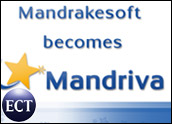
Microsoft announced today that it would extend its indemnification program to all end-users of its software products. According to analysts, however, the move is more a way to ease customers’ fears than a real value-add.
The software giant’s policy protects end users of software — including Windows Server System, SQL Server and Exchange Server, Microsoft Office System and the Windows client software — from the legal costs and damage claims related to being sued for intellectual property (IP) infringement.
The IP covered can be a patent, copyright, trade secret or trademark. The only software not covered are Windows CE and Windows XP Embedded, both embedded products. Microsoft already had the policy in place for certain business customers.
Comfort to Risk-Averse
“The broadening of Microsoft’s indemnification may give comfort to organizations with a very low tolerance for risk,” said Stacey Quandt, a senior business analyst at the Robert Frances Group. “Given the limited likelihood that an end-user customer would ever be sued for IP infringement, this is a further example of using Microsoft’s marketing ability to focus on an issue that is gaining visibility among end-users.”
Giving weight to that point of view is an advertising campaign Microsoft has created around the issue. It has also set up a “Get the Facts” Web site with information about IP infringement.
Giving Pause
Linux vendors such as Hewlett-Packard, Novell and Red Hat offer limited indemnity for end users, but it may not be enough to stem some fears. Quandt said Microsoft’s move may cause some buyers to be wary of open-source options.
“Microsoft’s efforts to broaden its indemnification and the limited understanding of open-source software and patents may lead to a false perception of risk and hinder organizations from taking advantage of open-source software,” she said.
Quandt also pointed out that IP infringement lawsuits are often without merit.
“Many of the patents issued by the U.S. Patent Office contain no innovation. Such patents enable third parties to recapture ideas that were previously in the public domain,” she said.
The bottom line is that customers should buy software because it is the best software to meet their needs, not because of concerns about patent lawsuits.
“End-users should make purchasing decisions based on technical merits of software. Also end-users need to determine their tolerance for risk,” Quandt said.




















































